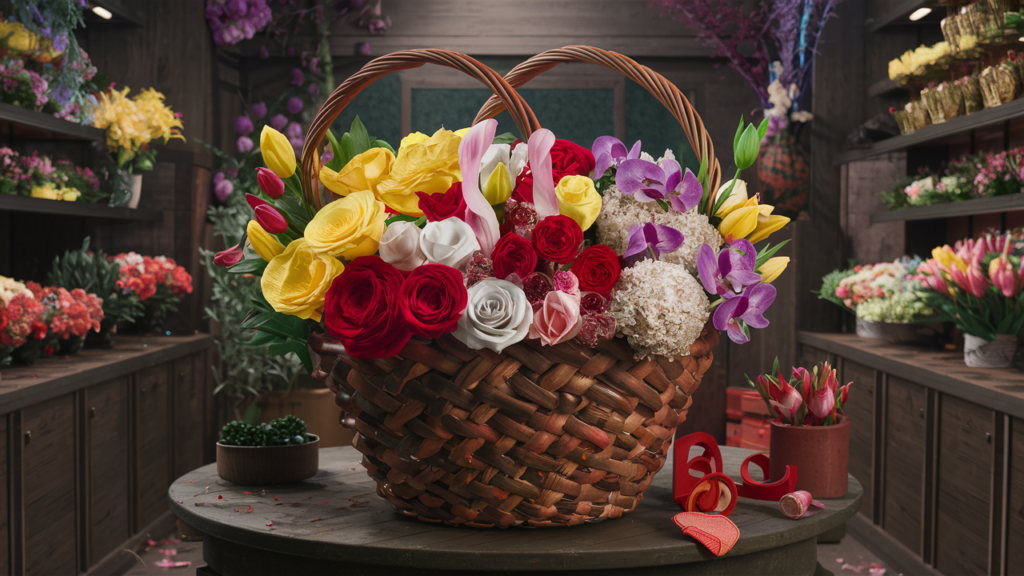Exploring the Heartfelt Traditions of German Valentine’s Day
GERMAN HERITAGE USA | AFFILIATE DISCLAIMER: This post may or may not contain affiliate links which means we may receive a commission for purchases made through links. We will only recommend products that we have personally used or that we truly trust. Learn more on our Private Policy and Disclaimer Page located under our Terms Of Service tab above.
Forget the pressure of red roses and dozen boxes of chocolates! Valentine’s Day in Germany offers a unique blend of tradition and romance, with a focus on experiences over extravagance.

While couples certainly enjoy celebrating their love, it’s not a day for grand gestures, but rather a chance to cherish your connection.
A Love Story with a Different Dialect
Valentine’s Day in the United States is a full-blown commercial affair, with children exchanging cards in classrooms and couples splurging on expensive gifts. In Germany, it’s a more intimate affair. Children don’t participate in the festivities, and adults in romantic relationships take center stage. This creates a more personal and focused celebration on your special someone.
A Touch of Germany: Geschenkideen (Gift Ideas)
So, how can you incorporate a touch of Germany into your Valentine’s Day celebration? Here are some ideas:

- Schweinerei der Liebe (Pigs of Love): Pigs symbolize luck and lust in German culture. Surprise your loved one with a playful pig figurine, a box of marzipan pigs, or a funny card featuring a cartoon pig.
- Lebkuchenherzen (Gingerbread Hearts): These beautifully decorated heart-shaped cookies, often inscribed with romantic messages like “Ich liebe dich” (I love you), are a delicious and traditional Valentine’s Day treat in Germany. You can find them online or try your hand at baking your own!
- Blumen sagen viel (Flowers Speak Volumes): While flowers are always appreciated, consider some typically German blooms. Red roses are still popular, but why not surprise your sweetheart with a bouquet of lilies (reinheit – purity) or Edelweiss (ewige Liebe – eternal love)?
Süße Verführungen (Sweet Seductions):
Chocolates are a universal symbol of love, but why not add a German twist? Look for chocolates flavored with liqueurs like Kirschwasser (cherry brandy) or marzipan, a sweet almond paste that Germans love.
Erlebnisse schaffen Erinnerungen (Experiences Create Memories):
Germans tend to focus more on creating lasting memories than giving expensive gifts. Plan a romantic getaway to a charming German town like Rothenburg ob der Tauber, or book a candlelit dinner at a local restaurant with a German menu. Even a simple walk hand-in-hand through a picturesque park can become a cherished memory.
A Growing Tradition: Valentinstag in den USA (Valentine’s Day in the USA)
Valentine’s Day wasn’t always a big deal in Germany. Its popularity has increased in recent decades, likely due to globalization. However, some areas of the USA with strong German heritage have their own unique ways of celebrating:
- Pennsylvania Dutch Country: This region, encompassing parts of Pennsylvania, Maryland, and Ohio, has a rich German heritage. Valentine’s Day celebrations often include traditional foods like Shoofly Pie (molasses cake) and fasnachts (doughnuts).
- Texas Hill Country: German settlements have thrived in Texas for centuries. In towns like Fredericksburg, Valentine’s Day might involve a festive Oom-Pah-Pah dance or a romantic carriage ride through the scenic countryside.
- The Midwest: States like Wisconsin and Minnesota have strong German roots. Valentine’s Day celebrations here might include enjoying a simple but traditional Bavarian style meal like sausages and sauerkraut, followed by a toast with a glass of imported beer.
Feiern Sie die Liebe auf Deutsch (Celebrate Love in German):
Whether you’re planning a romantic getaway or a cozy night in, incorporate these German-inspired touches to create a unique and memorable Valentine’s Day celebration. Remember, the most important element is expressing your love and appreciation for your special someone.

So, learn a few basic German phrases like “Ich liebe dich” or “Du bist mein Schatz” (You are my treasure), and let the love flow!
Floral Choices in Germany during Valentine’s Day
If you were to purchase flowers in Germany for Valentine’s Day, other than roses, what would be the top 5 choices?
Here are some of the top choices for Valentine’s Day flowers in Germany other than roses:
1. Tulips: Tulips are popular choices for Valentine’s Day bouquets in Germany because they come in a wide variety of colors, each with its own meaning. Red tulips symbolize perfect love, while pink tulips represent affection and happiness.
2. Lilies: Lilies are elegant and fragrant flowers that are associated with purity and devotion. White lilies are the most popular color for Valentine’s Day bouquets, but lilies also come in pink, yellow, and orange.
3. Orchids: Orchids are long-lasting and sophisticated flowers that symbolize luxury and beauty. They come in a variety of colors, including pink, white, purple, and yellow.
4. Hydrangeas: Hydrangeas are large, fluffy flowers that symbolize gratitude and heartfelt emotions. They come in a variety of colors, including pink, blue, and purple.
5. Gerberas: Gerberas are cheerful and daisy-like flowers that symbolize innocence and purity. They come in a variety of colors, including pink, red, yellow, and orange.
When choosing flowers for Valentine’s Day in Germany, it is important to consider the recipient’s preferences and the meaning of the flowers.

For example, if you want to express your passionate love, you might choose red tulips or lilies. If you want to express your appreciation and devotion, you might choose white lilies or orchids. And if you want to express your happiness and joy, you might choose gerberas or hydrangeas.
Abschließende Gedanken (Final Thoughts):
Valentine’s Day in Germany offers a refreshing alternative to the commercialized version often seen elsewhere. By focusing on experiences, unique gifts, and heartfelt expressions, you can create a truly special day that celebrates the love you share.
So ditch the pressure and embrace the German approach – Liebe ist in der Luft, and it’s time to celebrate!
